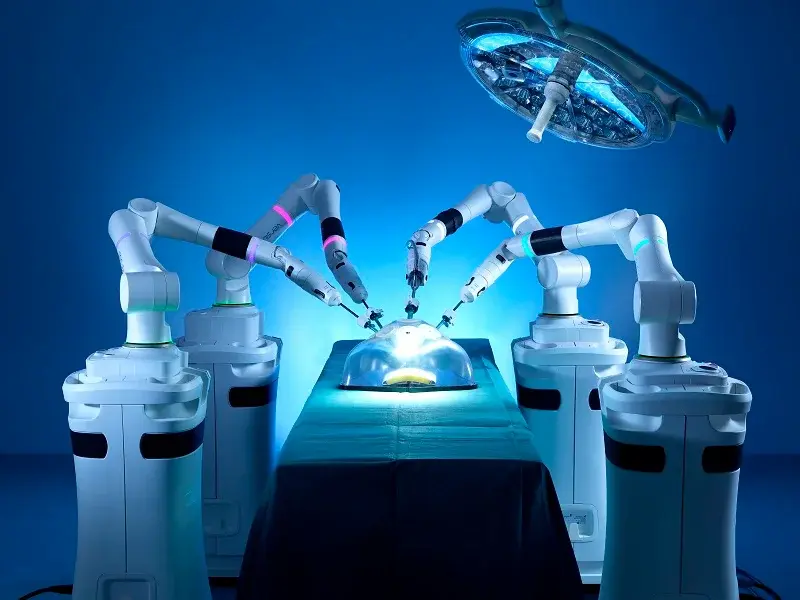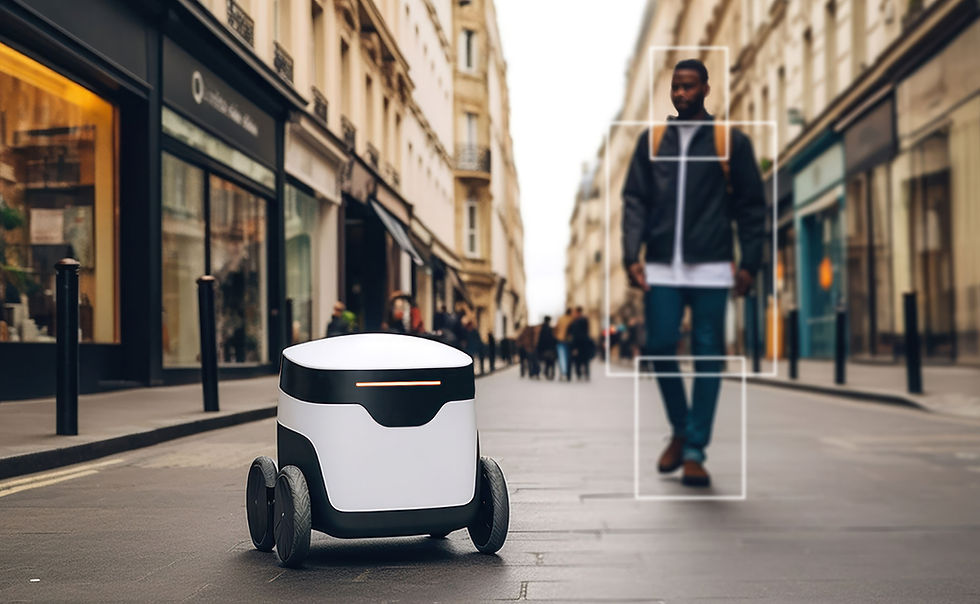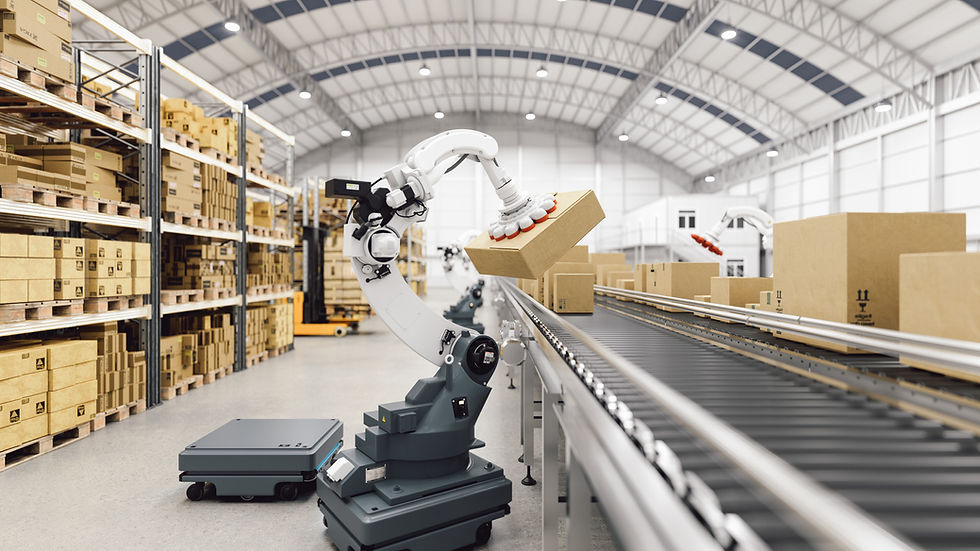Robot Sensors: Powers of Perception
- Sylvia Kay Rose

- Apr 16
- 4 min read
Updated: Aug 16
Robot sensors are powerful versions of human senses, and more. Robots perceive their surroundings, interpret information and interact with the environment.

Touch
Humans rely on touch to understand properties of objects, from pressing a button to feeling the texture of fabric. Robots mirror this ability with touch sensors:
Simple Touch
A simple touch sensor detects presence or absence of an object. It confirms when a robot arm successfully grasps an item or a mobile robot encounters an obstacle.
A robot vacuum cleaner registers "touch" and changes direction when it hits something, much like microbial do in a pond. Simple touch sensors are the basics of robotic sensing technology.
Robots detect the presence or absence of objects through tactile feedback. The system is similar to the way human skin registers touch, but without emotion.

Complex Touch
Complex touch sensors provide information about an object's size, shape, and softness and texture. Sensors incorporate arrays of pressure-sensitive elements. Specialized robots may have hundreds of sensors.
Bots with complex touch sensors do fine manipulation tasks. They assemble small components or grip fragile objects without crushing them.
A robotic hand can feel the difference between a screw and a bolt, or adjust its grip based on the object's fragility. Complex touch sensors give robots a deeper understanding of the geometry and texture of objects.
A robot arm on an assembly line can sense whether a part is the right size and maneuver it precisely. This capability is important for quality control. Robots with complex touch sensors are favored in auto manufacturing.

Force
Simple Force
Measuring force along a single axis, these sensors are useful for tasks requiring controlled exertion of pressure, like tightening a screw to a specific torque or applying a certain amount of pressure during polishing.
In logistics, a robot with simple force sensors can accurately gauge the weight of packages during loading or unloading. Giving precise weight measurements, these bots enhance efficiency and minimize human error.
Complex Force
Complex force sensors measure forces in multiple directions. Robots can assess direction, magnitude, and point of application of forces, mimicking human tactile perception. They can even perform surgery.
Bots equipped with complex force sensors can adjust the pressure applied based on the item's characteristics, reducing risk of breakage. Industries dealing with delicate products like electronics use this technology.

Vision
Vision is the most versatile sense. Robots are increasingly equipped with sophisticated vision systems.
Simple Vision
These systems focus on detecting basic visual features such as edges, holes, and corners. The effect is similar to how human eyes discern basic shapes and outlines in our surroundings.
It's useful for tasks like line following, detecting orientation of a part on a conveyor belt, or identifying edges of a weld during automated welding. Simple vision sensors detect edges, holes and corners.
A robot using simple vision can identify pathways or obstacles, navigating complex environments. In autonomous vehicles, this basic visual input is essential.

Complex Vision
Using algorithms and machine learning, complex vision systems recognize objects, interpret scenes and understand human gestures. Bots can sort objects, control quality, navigate autonomously and collaborate with humans.
Complex vision sensors replicate the cognitive functions associated with human vision. They identify items like a bottle on a shelf or a human on a crosswalk. This technology is used to develop self-driving cars and healthcare robots.
Sound
Robots "hear" using different sensors, mainly microphones, which capture sound waves and transform them to electrical signals. These are processed by the robot's computer system.
It's able to recognize speech, identify sounds, and carry out tasks based on auditory input. Beyond simply hearing, robots analyze the presence, frequency, and intensity of sound.

They can identify specific sounds, diagnose mechanical problems and communicate with humans through speech recognition. Robots can be used to diagnose machine failures by listening to the sound of the engine.
Proximity
Proximity sensors enable robots to detect objects without physically touching them. These sensors use infrared or ultrasonic waves to measure distance. In industry, proximity sensors ensure robots can detect the presence of workers or equipment.
These sensors detect the presence or absence of an object, its bearing (direction), color, and distance. A warehouse robot navigates aisles and avoids obstacles. A robot sorting objects on a conveyor belt can assess which items to pick up based on their characteristics.

Physical Orientation
With sensors like accelerometers and gyroscopes, robots determine their physical orientation in space. This helps maintain balance, navigate uneven terrain, and do precise tasks. Bot arms in assembly lines rely on physical orientation sensors to position themselves when assembling parts. .
Beyond the Human Senses
Heat
Heat sensors, also known as thermal sensors, detect infrared and ultraviolet rays and measure temperature. Infrared or UV sensors can determine temperature, wavelength, magnitude, and direction of heat sources.
If a drone equipped with heat sensors flies over a wildfire it can identify high-temperature hotspots. This technology is used in fire detection, search and rescue operations, and thermal imaging in industrial settings.
Chemicals
Chemical sensors can detect the presence, identity, and concentration of specific chemicals or reactants. They're used in environmental monitoring, industrial process control, food safety and medical diagnostics.
Bots can detect leaks in a chemical plant or measure air quality after a disaster. In labs, robotic chemical sensors monitor reactant concentrations during experiments for accurate measurements and reliable outcomes.

READ: Lora Ley Adventures - Germanic Mythology Fiction Series
READ: Reiker For Hire - Victorian Detective Murder Mysteries


